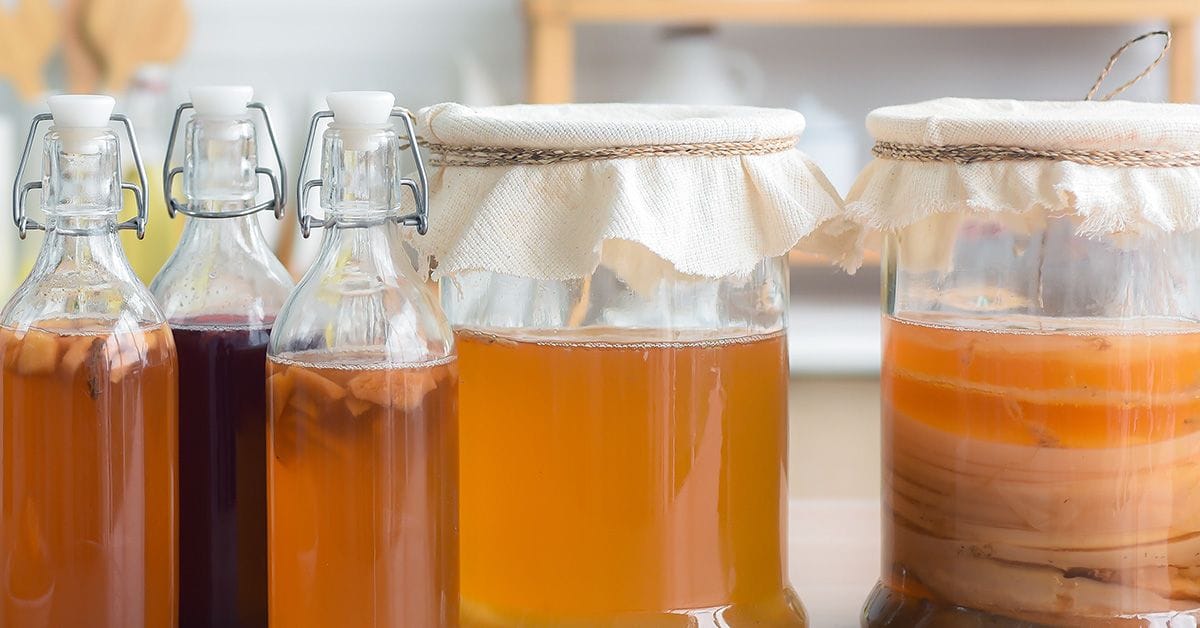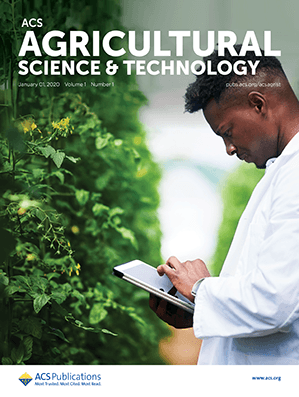Learn how chemists are brewing up flavorful, fermented interpretations of a classic, millennia-old recipe.

Kombucha is a probiotic drink made from fermenting Camellia sinensis1 tea with a symbiotic culture of bacteria and yeasts. It has a slightly sweet yet spicy flavor profile, with fruity notes and a low alcohol content. The popularity of kombucha2 as something of a healthy choice arises from the variety of vitamins, organic acids, polyphenols, and probiotic microorganisms that it contains—and which deliver both antioxidant and anti-inflammatory properties. In recognition of its health benefits, kombucha is the fastest growing functional beverage market:3 in 2022, global worth was 2.08 billion dollars, and that’s predicted to jump to 6.14 billion by 2028.4 The concentration of functional metabolites varies depends on the carbon source, tea concentration, fermentation time and temperature, raw material type, and the level of calcium ions consumed by microbes.2
Recently, a team in Brazil studied the effects of replacing Camellia sinensis with passion fruit or apple juice in a kombucha recipe, specifically analyzing its physicochemical profile, bioactive composition, and sensory characteristics.5 Yellow passion fruit is used in many traditional medicines as a sedative and anxiolytic agent, and it is believed to have antioxidant, anti-inflammatory, gastroprotective, and antidiabetic properties.6 It is also known to contain bioactive compounds, such as tocopherols and carotenoids. Apples are one of the most popular fruits produced around the world, and they contain numerous health benefits due to their dietary fiber content and bioactive compounds such as flavan-3-ols, phenolic acids, dihydrochalcones, and flavonols.5
The researchers fermented both passion fruit and apple juice, alongside the classic Camellia sinensis, using traditional kombucha brewing techniques—most notably a spongy disc-shaped culture called a SCOBY, short for "symbiotic culture of bacteria and yeast." After 10 days of fermentation, they measured the levels of various bioactive compounds across all three beverages.

Physicochemical Properties, Antioxidant Activity, and Sensory Profiles of Kombucha and Kombucha-Like Beverages Prepared Using Passion Fruit (Passiflora edulis) and Apple (Malus pumila)
DOI: 10.1021/acsagscitech.4c00372
Their findings revealed that the beverage fermented from passion fruit juice had higher acidity and alcohol content, with lower soluble solids, total sugars, reducing sugars, and nonreducing sugar contents. In contrast, the classic kombucha and apple juice ferment contained higher levels of total phenolics and flavonoids, as well as higher antioxidant activity compared to the passion fruit drink. All three brews had similar amounts of anthocyanin. During sensory evaluations, testers reported that the passion fruit drink had a nice aroma, but the taste was perceived as sour and bitter. Most were fans of the fermented apple beverage, and the researchers note that it may be a promising alternative to traditional tea-based kombucha. The authors plan to explore other fruits in future studies, evaluating their flavor profiles and health benefits post-fermentation.
References
- Jiang, C.-K. et al. Metabolomics for a Millenniums-Old Crop: Tea Plant (Camellia sinensis). J. Agric. Food Chem. 2019, 67, 23, 6445–6457.
- Huang, R. Exploring Kombucha: Production, Microbiota Biotransformation, Flavor, Health Benefits and Potential Risks. ACS Food Sci. Technol. 2024, 4, 7, 1610–1625.
- Freitas, A. et al. Alternative raw materials in kombucha production. Int. J. Gastronomy Food Sci. 2022, 30, 100594.
- https://www.statista.com/statistics/661382/kombucha-market-value-worldwide/
- Ferreira da Silva, S. et al. Physicochemical Properties, Antioxidant Activity, and Sensory Profiles of Kombucha and Kombucha-Like Beverages Prepared Using Passion Fruit (Passiflora edulis) and Apple (Malus pumila). ACS Agric. Sci. Technol. 2024, 4, 9, 938–946.
- Fonseca, H.C. et al. Sensory and flavor-aroma profiles of passion fruit juice fermented by potentially probiotic Lactiplantibacillus plantarum CCMA 0743 strain. Food Res. Int. 2022, 152, 110710.
